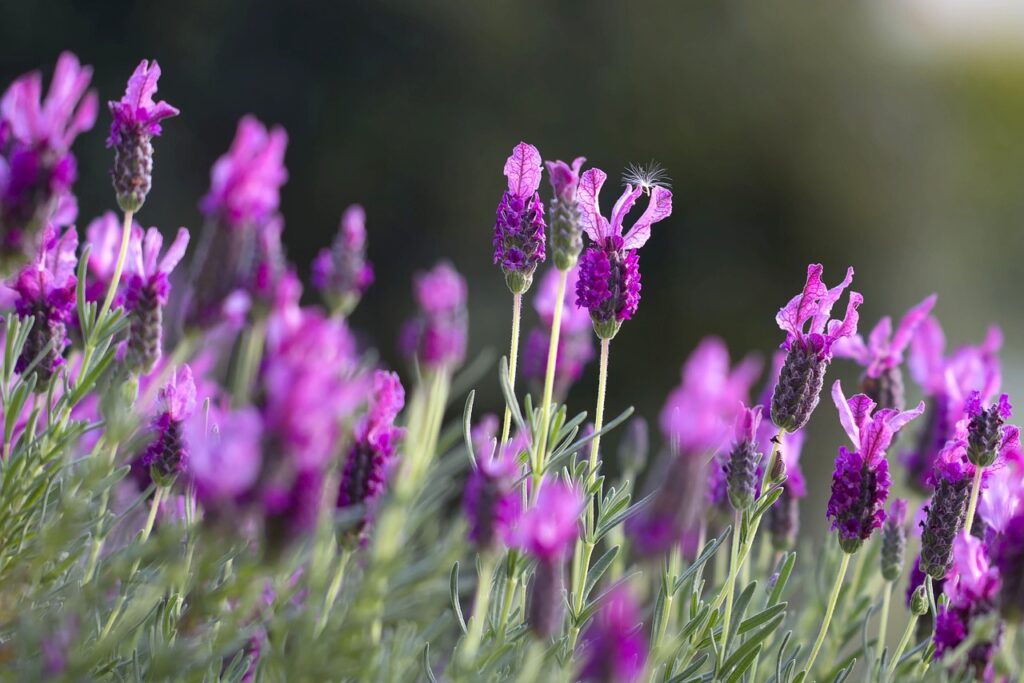Lavender, an herb with many culinary uses, also makes a stunning addition to borders and perennial gardens, providing sweeping drifts of color from early summer into fall. With its silvery-green foliage, upright flower spikes and compact shrub-like form, lavender is ideal for creating informal hedges. You can also harvest it for fragrant floral arrangements, sachets, and potpourri.
In the garden, lavender makes an excellent companion plant for almost anything from roses to cabbage. It is one of those aromatic, gray herbs that deer avoid, making it a great choice as a decoy in your beds.
Choosing lavenders to grow

The type of lavender you grow will depend on personal choice, including flower colour and shape, plus the shade and fragrance of the foliage (some lavenders have silvery grey leaves, while others are more green). However, there are some pointers to be mindful of when choosing which lavender to grow in your garden. Firstly, it’s worth noting that English lavender, Lavandula angustifolia, is more hardy and long-lived than French and Spanish lavenders, Lavandula dentata and Lavandula stoechas. It’s thought that English lavender is also more attractive to bees than French or Spanish lavender.
Traditional English lavender varieties include ‘Hidcote’ and ‘Munstead’. These are undeniably lovely and rightly popular, but have you considered intermediate lavenders? Sometimes called ‘lavendins’, these hybrid lavenders have Lavandula angustifolia and Lavandula latifolia as their parents. Lavendin lavenders are more robust than other lavenders and therefore more tolerant of wetter soils and colder winters. They’re larger in habit than English lavenders and flower for a longer period, providing more flowers for you to enjoy and more pollen and nectar for bees. Popular hybrid lavenders, or lavendins, include Lavandula x intermedia ‘Edelweiss’ and Lavandula x intermedia ‘Grosso’.
How to Plant Lavender
As with most plants, your success in growing lavender will depend both on what kind of growing conditions you can provide and which varieties you select to grow. Lavender plants will tolerate many growing conditions, but they thrive in warm, well-draining alkaline soil, and full sun.
Most lavenders are labeled hardy in USDA zones 5 through 9, but this is not a plant that is dependable enough to plant as a hedge. Realistically, you can expect plants to do well when the weather cooperates, but be prepared to experience the occasional loss of a plant or two after a severe winter or a wet, humid summer.
Even if you do everything right and your lavender plants appear happy, the genus is generally not long-lived and most lavender plants begin to decline in 10 years or less. Keep starting new plants to ensure you have a bountiful harvest for years to come.
How to Care For Lavender
Water once or twice a week after planting until plants are established. Water mature plants every two to three weeks until buds form, then once or twice weekly until harvest.
In colder growing areas, plants may need extra winter protection. Cover the plants with a winter mulch of evergreen boughs or straw, which will insulate from freezing winds and temperatures.
Another option for cold areas is to grow lavender in a pot, keeping it outdoors in the summer and indoors in winter. While indoors, place the pot in a south-facing window with as much light as possible. Water sparingly, as the plant will be dormant at this time.
Pruning Lavender
In warm climates: all pruning can be carried out in the autumn.
In cooler climate: Prune established plants in the spring when green leaves start to emerge from the base of the plant. Remove approximately one third of the top to keep. the plant from becoming leggy and bare at the base. It’s important not to cut back into old wood however, as it won’t regrow from this. Leave the foliage over the winter to protect new growth from frosts,
Also, the flowering stems can be harvested while in bloom or snipped off after the flowers fade to keep the plant tidy.
Leave a reply













